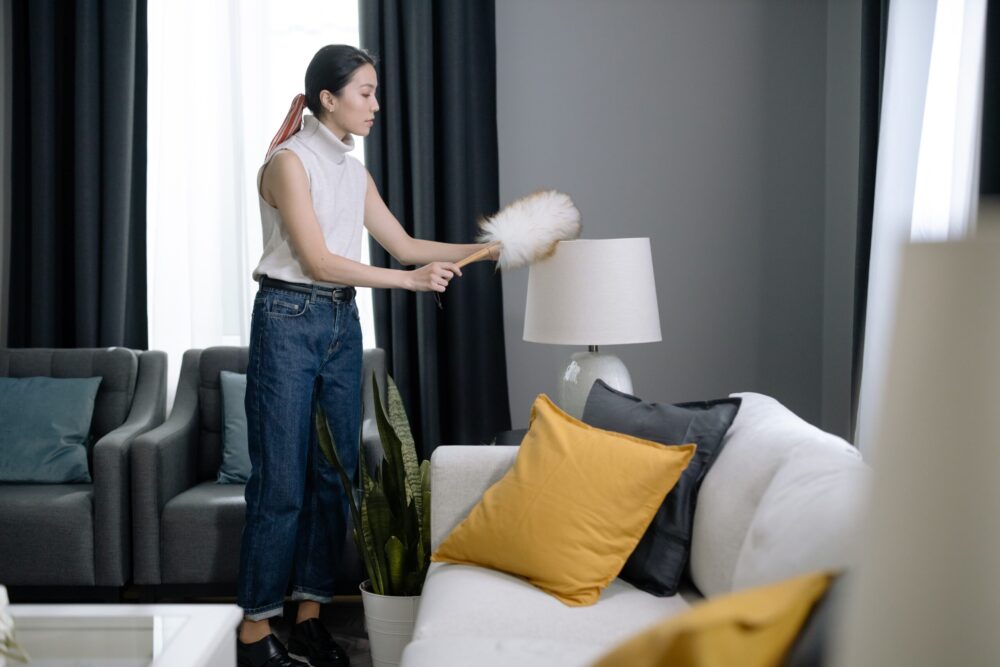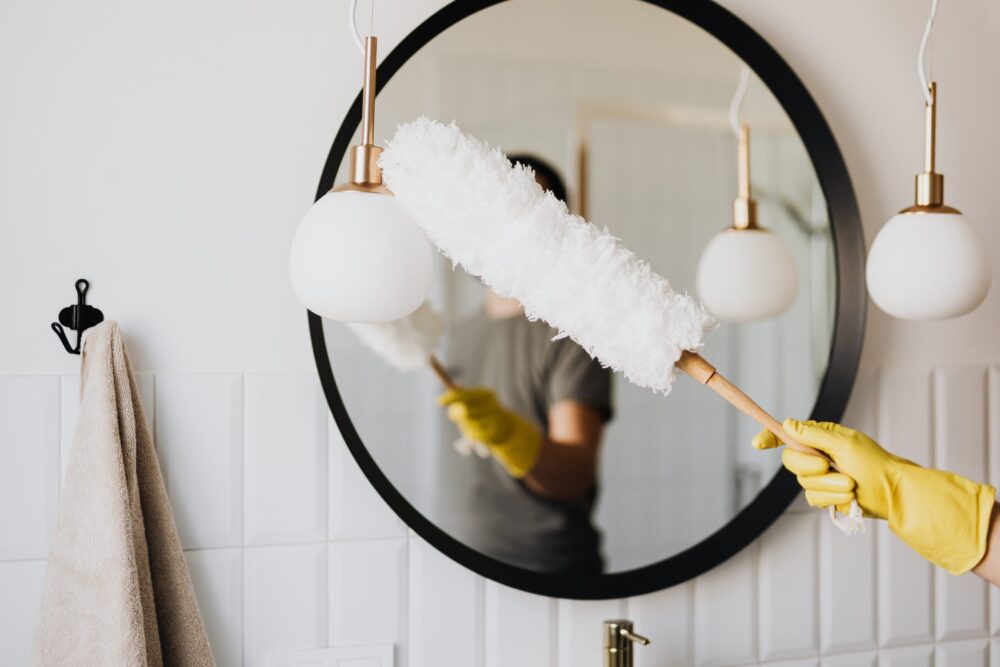Everyone knows the struggle of dusting. You see dust build up in your home, you clean it up, and suddenly dust creeps back up again. It’s easy to want to throw your hands up and just ignore the dust, but we can assure you that this is not such a great idea.
Dust is made by a combination of different elements — skin cells, your hair and animal hair, dirt, pollen, and other intrusive elements. No one wants this stuff crowding their home.
Here’s the million dollar question — what dusting strategy helps keep dust away for good? Is that even possible?
Quality cleaning services can assist with weekly dusting, but there are things you can do yourself to make sure it gets done regularly and consistently.
Continue reading to know why you should keep a regular dusting schedule.
Why Is Dusting Important?
The components in dust particles vary. It’s likely a combination of dead human skin cells, hair, and pet dander (if you have pets). But far more dangerous components, such as bugs, can live in dust.
As dust builds, more intrusive elements combine. This forms what is known as dust bunnies — those big hunks of dust that hide under or behind your furniture.
Dusting is important as it reduces your risk of sickness and allergies. While most types of dust don’t cause severe illnesses, they can induce mild allergies and sicknesses. This includes:
- Coughing
- Eye irritation
- Sneezing
In severe cases, dust can irritate asthma and cause hayfever.
In addition, dust is an eyesore. A huge layer of dust can make a beautiful furniture piece look ugly and unkempt.
How to Dust Properly
Now that you know you can’t procrastinate on house cleaning and getting rid of those dust bunnies, you’re ready to learn how to dust. There are many dusting methods, but one reigns them all. Here’s how to dust properly.
Start By Removing All Items
Dust each piece of furniture one at a time. Start by removing everything off of the furniture.
In order to remove all of the dust, taking shortcuts and dusting around your items won’t help. In addition, it takes more time to pick up each item and dust under them than to just remove everything off of the piece of furniture and dust it all in one go.
Use a Dusting Cloth
Take your dusting cloth and give the furniture a good wiping. These are specialised microfiber cloths made to attract and hold dust particles. They don’t cause dust to fly around like dusters and they don’t leave residue the way spray cleansers do.
Dust Your Items
Don’t only dust your furniture! Take the items on your furniture and dust each off using a separate dusting cloth.
Clean the Area Around Your Furniture
Just in case any dust travelled, you’ll want to clean around your furniture. Take a broom or vacuum (depending if your floors are carpet or not) and give the floor a good cleaning around the area.
It’s also a good idea to take another dusting cloth and clean the sides, front and bottom of the furniture.
Additional Dusting Tips
The ultimate dusting method isn’t the only important fact to know about dusting. Here are some dusting tips from the pros!
Regular Dusting vs. Deep Clean Dusting
The big question — should you dust regularly or only dust when it starts to become noticeable?
Ideally, you should dust your home regularly. If you don’t dust every week, you should at least dust every other week. However, there’s actually a difference between a regular dusting and the dusting you do during spring cleaning.
The items you deep clean are ones that are less noticeable. This includes on the windowsills, the door frames, behind furniture, under the beds, the walls and the fan.
You should regularly clean areas that accumulate dust quickly and the more noticeable parts of the home. This includes furniture in your living room, bedroom, bathroom, dining room, and the kitchen.
You should also pay attention to where family and guests usually spend time — for example, dust around the headboards of a bed and on tables.
Preventing Dust
Does doing all of that dusting every other week make you miserable? You don’t have to dust as often if you know how to prevent dust.
While most dust comes from human skin and hair, you can prevent the external intrusive particles such as pollen. Seal your doors, windows, and vents.
Lay down a bristly doormat that will trap excess dirt from shoes. Never walk around your home with shoes — leave them outside or by the door before you walk in.
For the dust you do develop, an air purifier will help trap excess dust particles. If you have pets, keep them groomed well and take strides to avoid shedding.
You should also have as little clutter as possible. Dust can stick to practically anything. You may not think to dust the loose items around your house. That’s why it’s best to just eliminate them.
Why Not Use Dusters or Dusting Sprays?
We emphasised using dust cloths when dusting. But why not dusting sprays or the classic fluffy dusters?
Dusters are great at removing dust but they’re not great at preventing dust.
Some dust attaches to the duster but many dust particles continue floating in the air and migrate to other places in your home. Some dusters don’t even remove all of the dust.
Dusting sprays are another common dusting method.
Many dusting sprays are great at cleaning lots of dust and leave your home smelling nice. However, these sprays commonly leave a residue. This may not be suitable for certain furniture materials such as wood.
Are You Sensitive to Dust?
Do you put off dusting because dust irritates your allergies? Not dusting will make your allergies even worse. If you’re concerned you’ll experience allergies while dusting, wear protective gear.
If you experience irritation when breathing in dust, wear a face mask. If you experience eye redness and itchiness, wear goggles. Always wear gloves to prevent carrying dust on your hands.
Need More Help Dusting?
Dusting isn’t a glamorous job but it’s a necessary one. Dust builds up all over your home and can be dangerous as well as unsightly. It’s important to know how to properly dust your home and take measures to prevent dust.
Do you need help dusting? We help clean homes in many areas of Melbourne.



